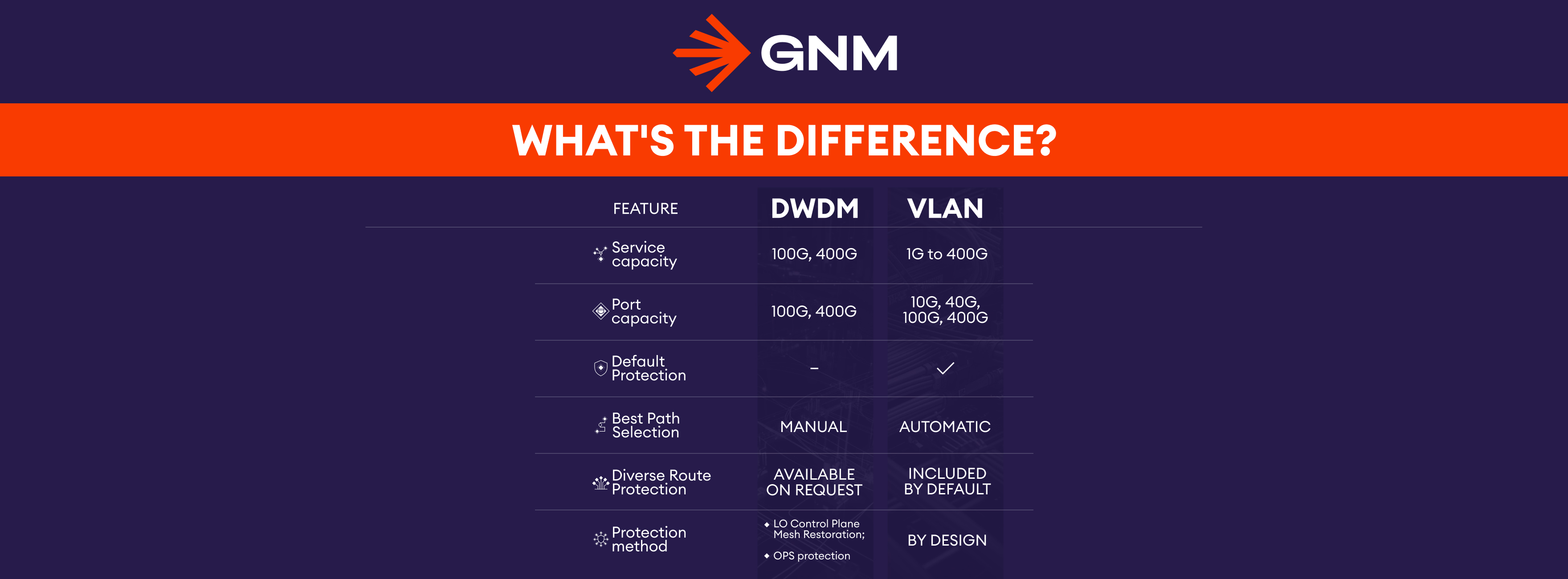We use cookies to improve our services. By continuing to navigate the site, you agree to the terms of use of cookies.
Filters
Map search

05 Mar 2025
DWDM channels vs. VLAN (L2VPN) – What’s the difference?
DWDM channels (Wavelength) and VLAN (L2VPN) services might seem similar—both deliver high-speed, end-to-end, high-capacity connectivity. But choosing the wrong solution could mean unnecessary costs, complex network management, or limitations in scalability.
The right decision depends on how you plan to scale, protect, and optimize your network. Let’s break it down.
VLAN (L2VPN) – Flexible and resilient Ethernet transport
L2VPN is a carrier-grade Ethernet service designed for scalability, resilience, and ease of integration into your network. It offers a cost-effective alternative to optical transport while maintaining high reliability.
- Supports bandwidth from 1G to 800G, making it suitable for growing traffic needs.
- Protected by design—automatic failover ensures network continuity in 99% of cases.
- Best path selection included—your traffic is dynamically routed across the most efficient path.
- No need to manage your own optical equipment—you get a plug-and-play protected Ethernet transport solution that seamlessly integrates into your existing infrastructure.
Ideal for small and medium ISPs, cloud providers, and enterprises looking for scalable, redundant connectivity without managing optical layers.
DWDM channels (Wavelength) – Dedicated high-capacity optical transport
DWDM provides a fully dedicated, ultra-high bandwidth solution that offers complete control over optical transmission. Unlike L2VPN, which operates on a shared network, DWDM gives you a direct optical channel for your data.
- 100G and 400G ports, purpose-built for large-scale traffic demands.
- Unprotected by default, meaning you have full control over route selection, but also need to plan and provide redundancy.
- Minimal latency—DWDM bypasses additional Ethernet switching, offering the fastest possible transport.
- Advanced protection methods available on request:
1. L0 Control Plane Mesh Restoration – automatic rerouting via backup paths (requires warm reserve capacity).
2. OPS Protection – additional redundancy, deployed as a custom project with extra equipment.
Best suited for hyperscalers, Tier-1 networks, and enterprises requiring dedicated optical links with maximum control over performance and redundancy planning.
Still unsure which service fits your needs? Contact us at sales@gnm.net for expert advice.